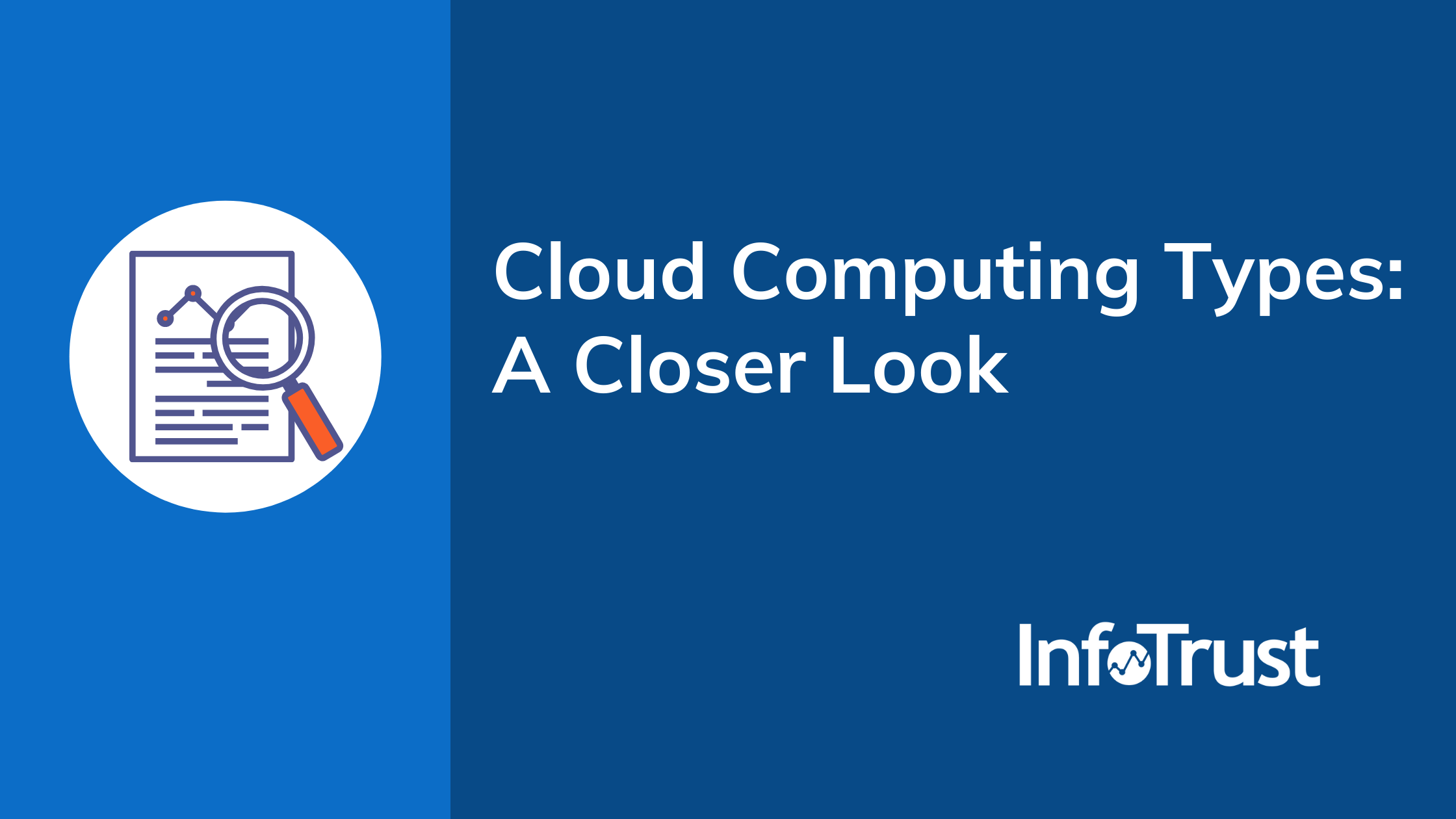What is cloud computing?
In a nutshell, cloud computing is a form of advanced technological outsourcing. Today, companies can have their IT resources managed by an outsourced specialist through a remote contract—all without the company having to bear the costs of purchasing licenses or machines to take advantage of services essential to the business.
Thanks to the cloud, the supplier will maintain the infrastructure necessary to manage and distribute services based on demand (on-demand) and a pay-per-use-formula. The methods of use are defined periodically or on a consumption basis—all with a subscription to specific service characteristics (SLA) and security to ensure business continuity.
The main types of cloud computing
Software as a Service (SaaS)
What is the cloud computing approach intended with the Software as a Service (SaaS)? SaaS is a software distribution model (management, middleware, email management, videoconferencing, and modules of CRM, business, intelligence, HR management, and so on). This occurs when a manufacturer develops, operates (directly or through third parties), and manages web access, making it available to its customers via the internet. In this way, you can access the various applications you have purchased via a web interface or a custom interface and access methods as established by the contract.
- Examples of SaaS: Microsoft Office 365, Salesforce, Cisco WebEx, Google Apps
Platform as a Service (PaaS)
What is the Platform as a Service (PaaS)? The term PaaS means an offer in which the client company is guaranteed a platform that supports the development of cloud computing applications. The platform includes programming languages, libraries, services, and dedicated tools, entirely developed by the provider. The elements that make up PaaS allow you to program, test, implement, and manage applications without the cost and complexity associated with purchasing, configuring, optimizing, and managing the necessary hardware and software needed for development activities. According to current data, the trend of spending in PaaS records an acceleration with 49 percent growth in 2019. It increases its relative share in the investment mix (compared with the percentage of infrastructure and software), reaching 14 percent of the total expenditure volume.
- Examples of PaaS: AWS Elastic Beanstalk, Apache Stratos, Google App Engine, Microsoft Azure
Infrastructure as a Service (IaaS)
IaaS is an advanced outsourcing of all ICT resources. In cloud computing, we mean a group of technologies that are now so mature that it is possible to move anything on the cloud: the principle is that thanks to a new generation of software programming, physical resources are transformed into logical resources. So you can use software servers, storage, appliances, switches, security devices, firewalls, routers, and so on. Today, providers have come to offer a large part of the network in the cloud: in practice, an entire virtual data center can reside on the cloud.
- Examples of IaaS: Microsoft Azure, Amazon Web Services (AWS), Cisco Metacloud, Google Compute Engine (GCE)
Anything as a Service (XaaS)
What does Anything as a Service consist of? Basically, this is what SaaS is: it is an integral part of a holistic vision of those who trust and rely on cloud computing. This is the maximum evolutionary horizon in the curve of services offered in the cloud—and is part of a development associated with the internet of things that is advancing at the rate of a prevailing smartification of objects. Managing platforms capable of administering, monitoring, and securing all the sensorized objects of which public and private companies are dotting the world is another challenge that cloud computing welcomes very gladly.
Integration Platform as a Service (iPaaS)
Let’s now examine what iPaaS is: the cloud computing service that offers IT a platform for integrating data, applications, services, and processes. These are platforms that often have fewer features than on-premise ones, but are more comfortable to use. Additionally, they offer ease for the development of model development tools and a portfolio of pre-packaged integrations; also, more and more frequently, they integrate API management functions. They are platforms to support cloud-to-cloud and mobile-to-cloud integration. iPaaS provide simpler development environments than on-premise ones; they try to achieve what we call “ad hoc integration” more efficiently, which is integrating specific projects.
Desktop as a Service (DaaS)
You can’t understand what Desktop as a Service (DaaS) is if you don’t first understand what desktop virtualization is. In general, the service arises from the development of deduplication technologies that use a hypervisor, which is a technique that allows you to run multiple (virtual) machines residing on a (real) computer called a host. This will enable you to store a computer operating system’s configuration as if it were a photograph (snapshot). Moreso, it allows you to release the same type of configuration on one or more stations in a few clicks without having to deal with lengthy installations and manuals as happens with physical desktop workstations.
There are two leading virtualization technologies: Virtual Desktop Infrastructure (VDI) and DaaS. What are the differences? While VDI is an in-house approach where virtual machines are managed on a local server, i.e., within the company, DaaS is a cloud provider’s service. In this way, desktop management is transformed into a contracted service according to pay-per-use and on-demand methods. This changes the governance because it relieves the company of any management burden, freeing up resources and at the same time guaranteed a state-of-the-art infrastructure.
With DaaS, only the data that users can access through any application as if they were resident on a local disk are made available via the web. It will be up to the cloud provider to guarantee the best technologies, approaches, and security methodologies that virtual desktops must provide behind a subscription subject to a specific SLA required by the client company.
The bottom line
Cloud computing has transformed the way companies around the world do business in ways that many people don’t even realize. Understanding the difference between various types of cloud computing and identifying which one is the right fit for a growing business is tremendously important. As cloud services continue to proliferate, they will surely provide new opportunities for companies looking to innovate and drive business results.


